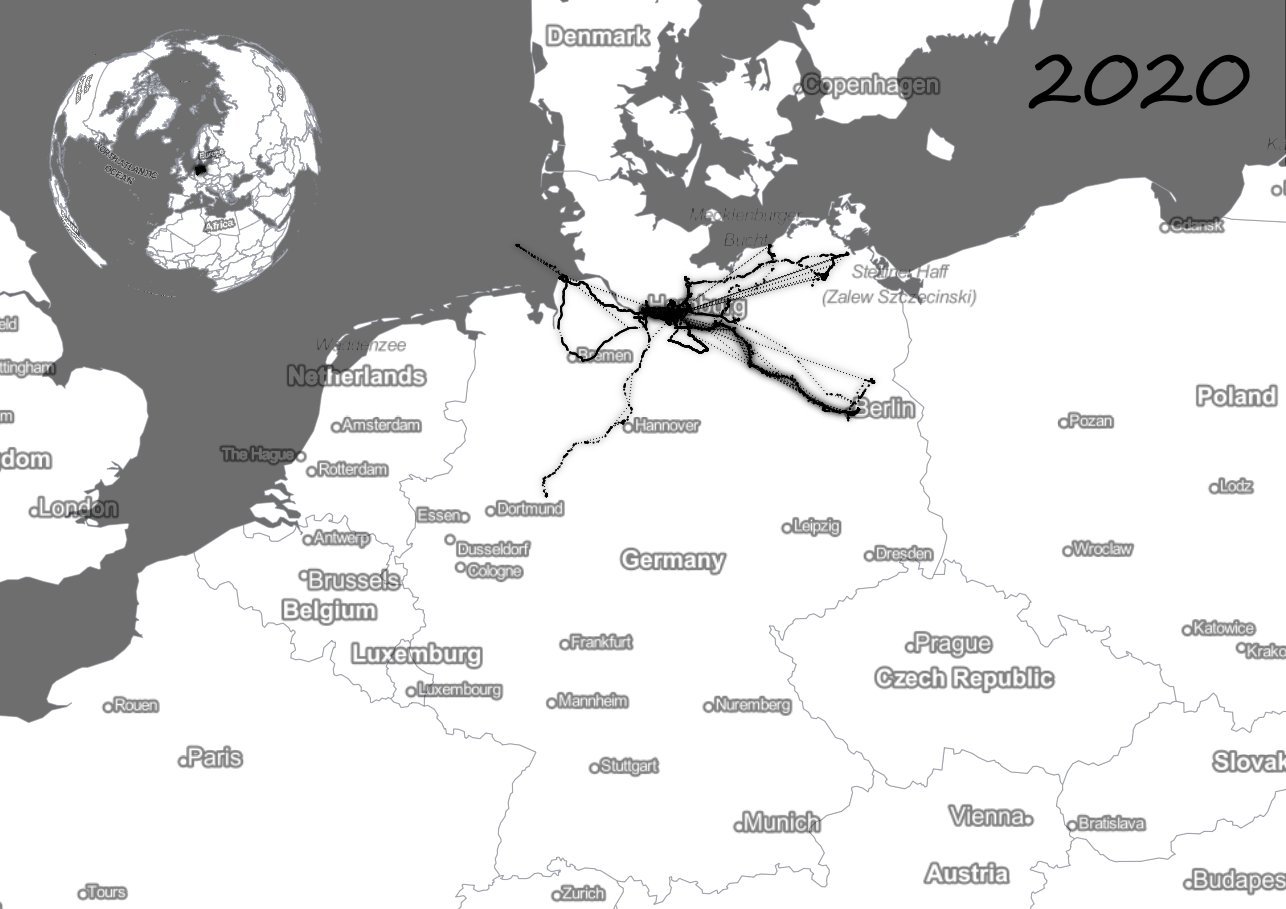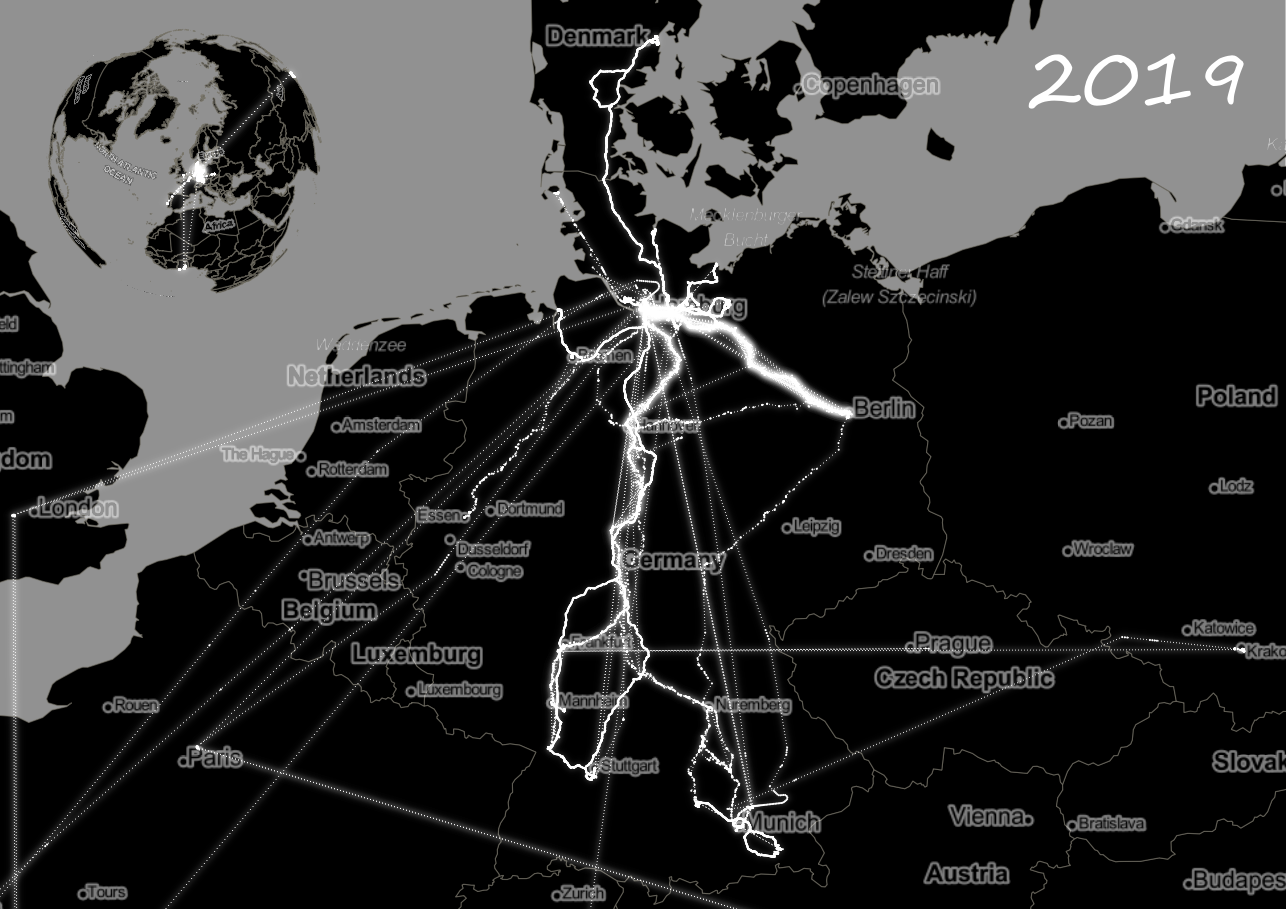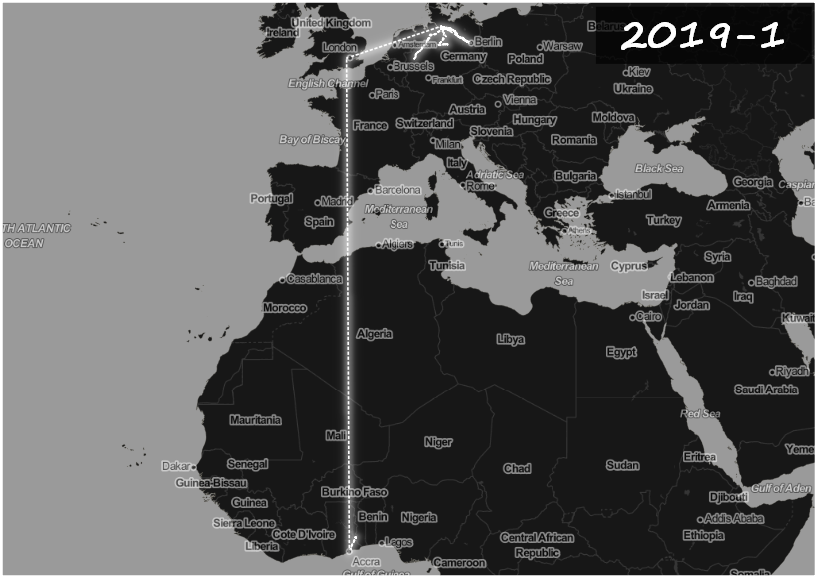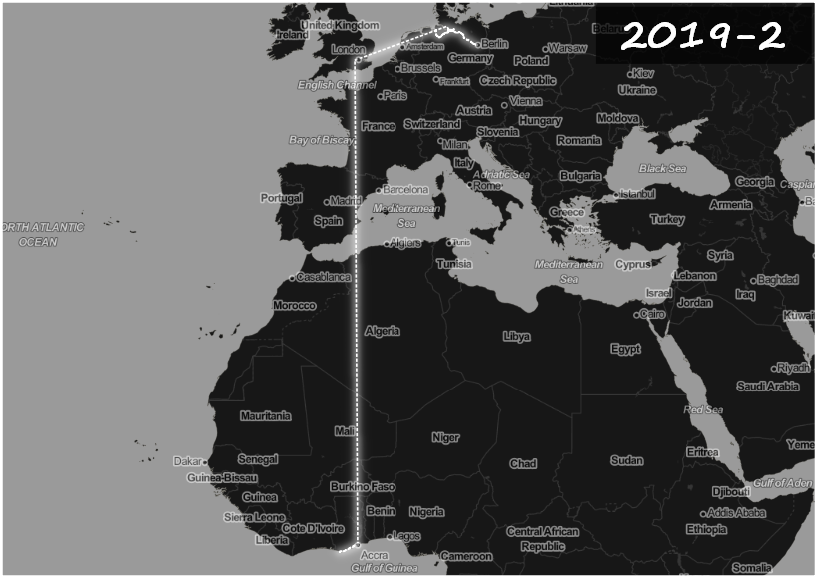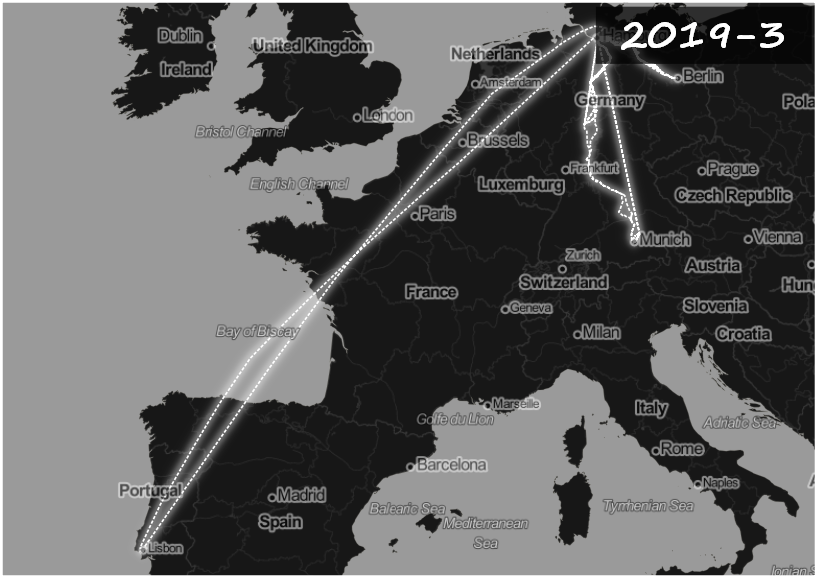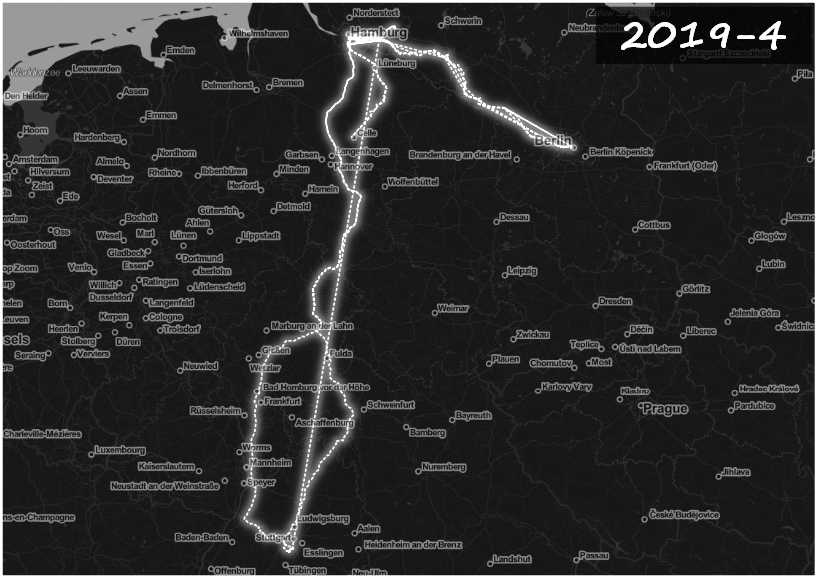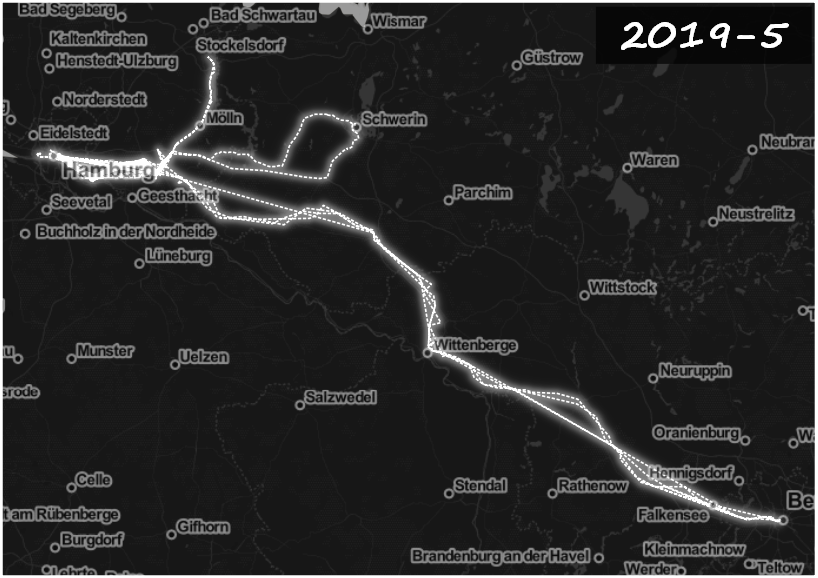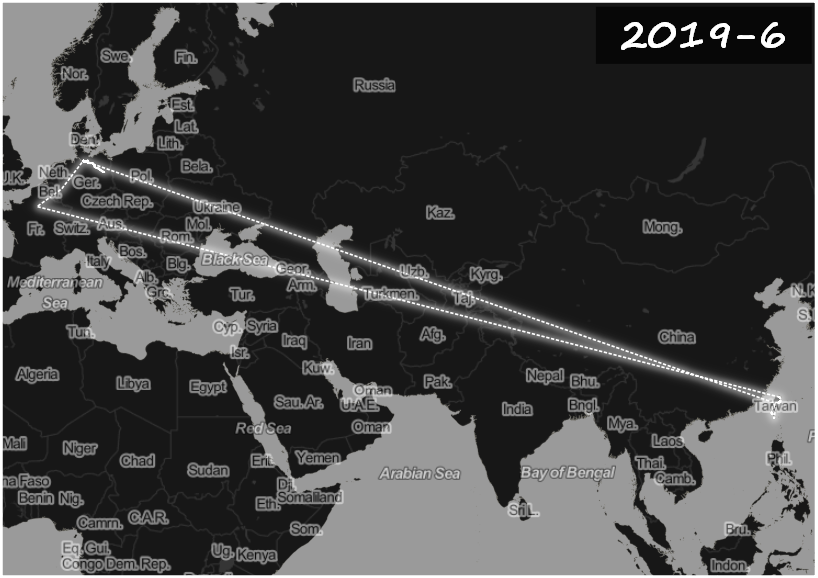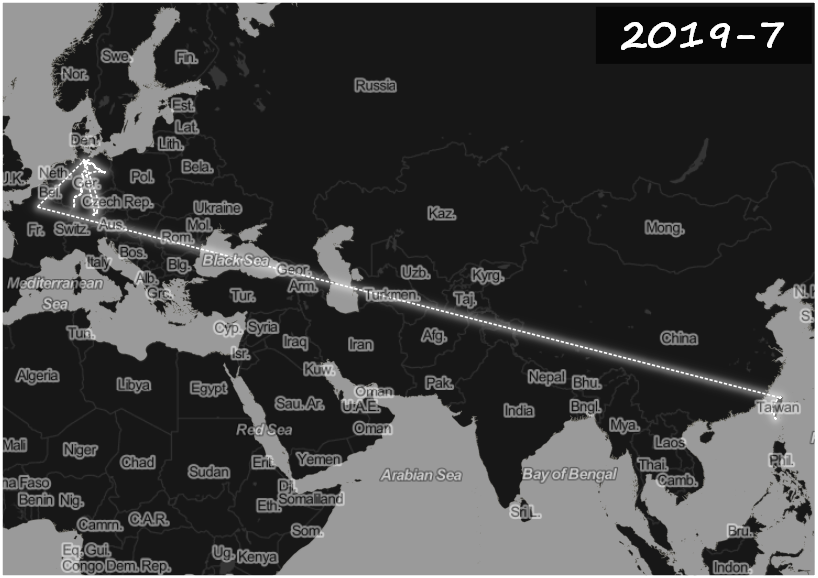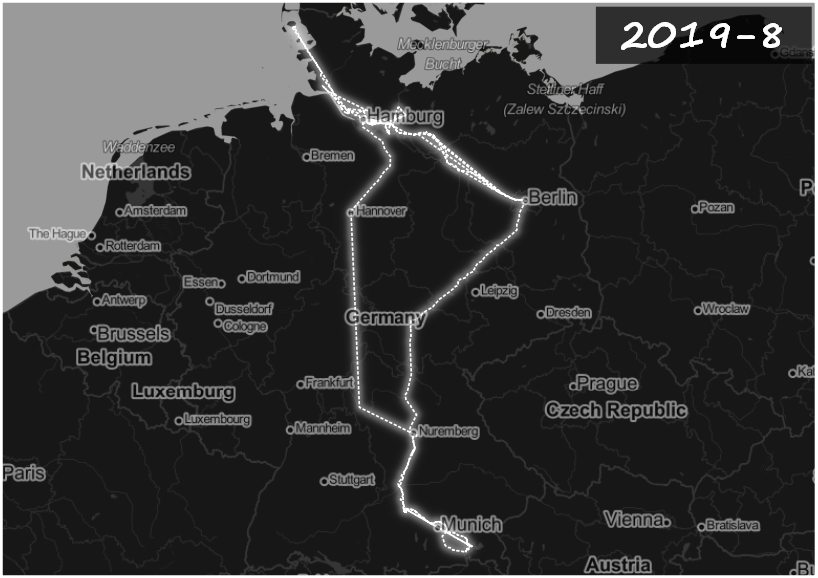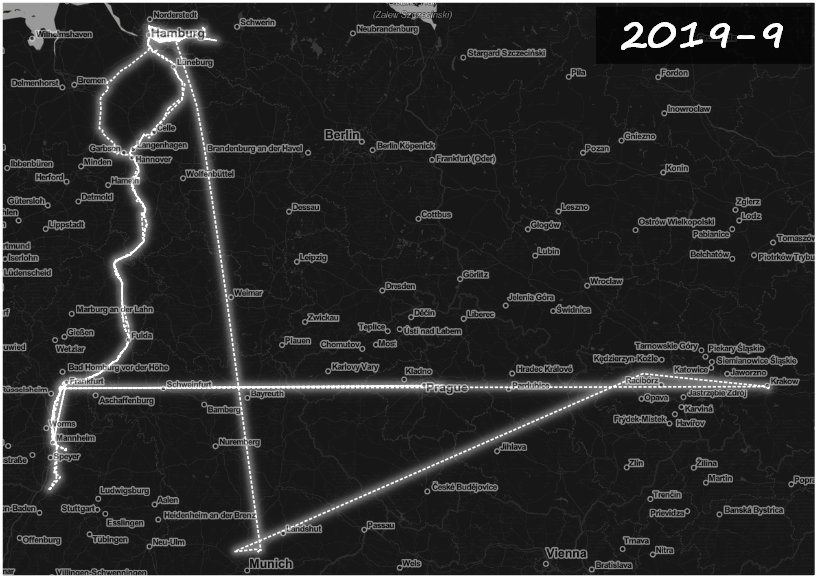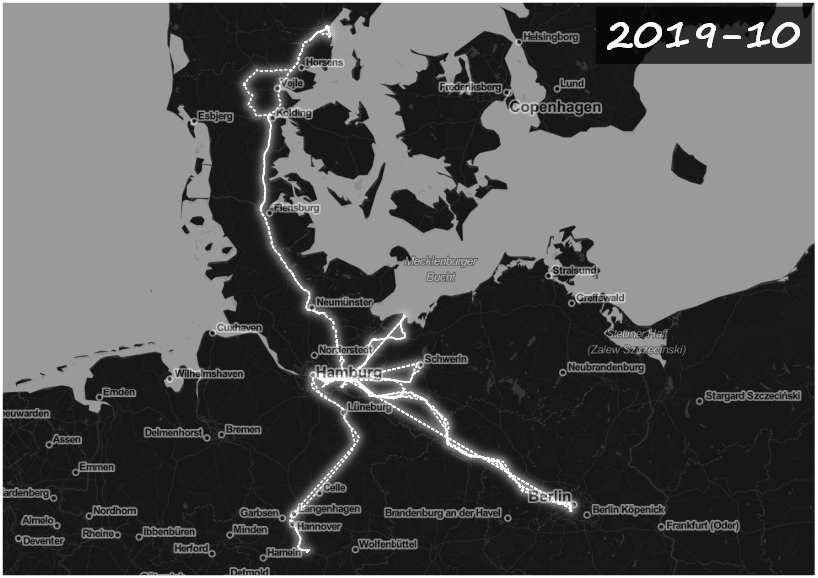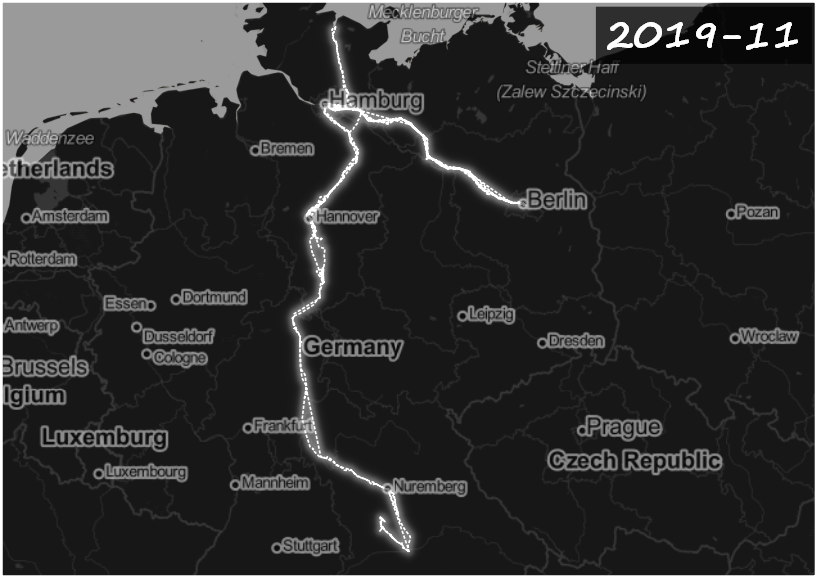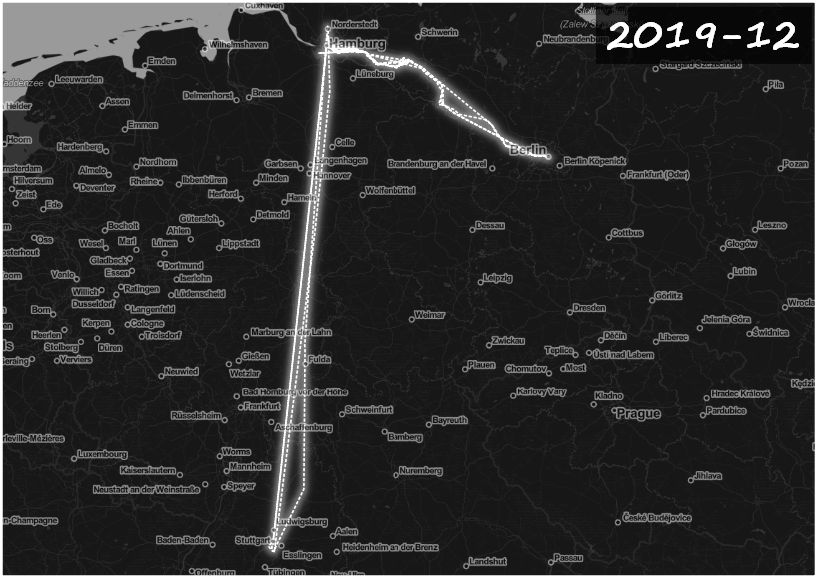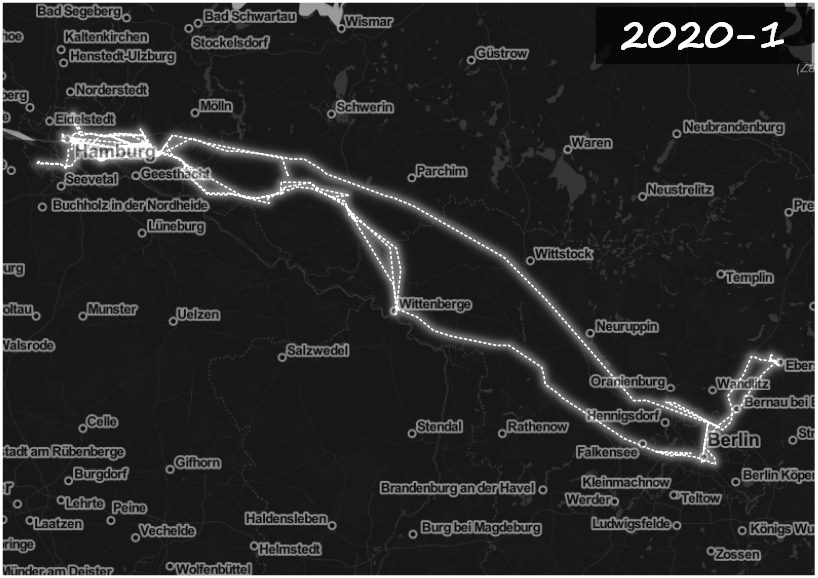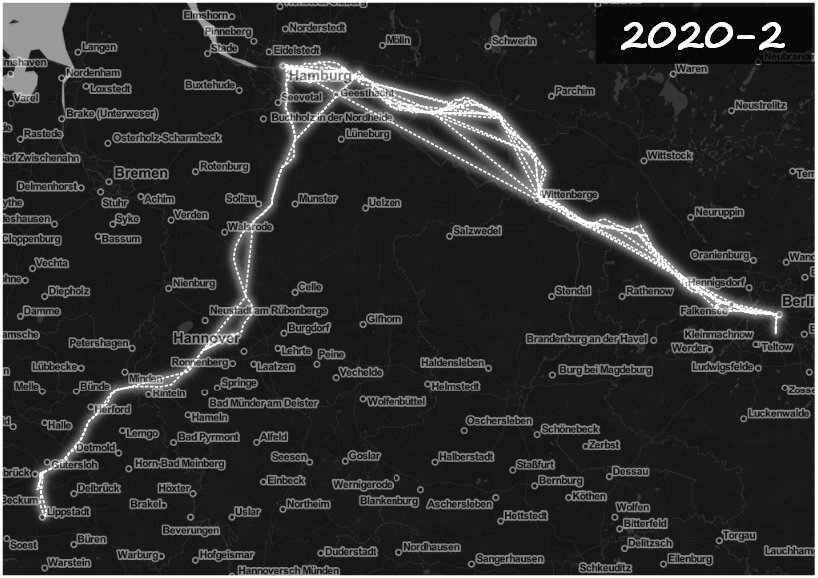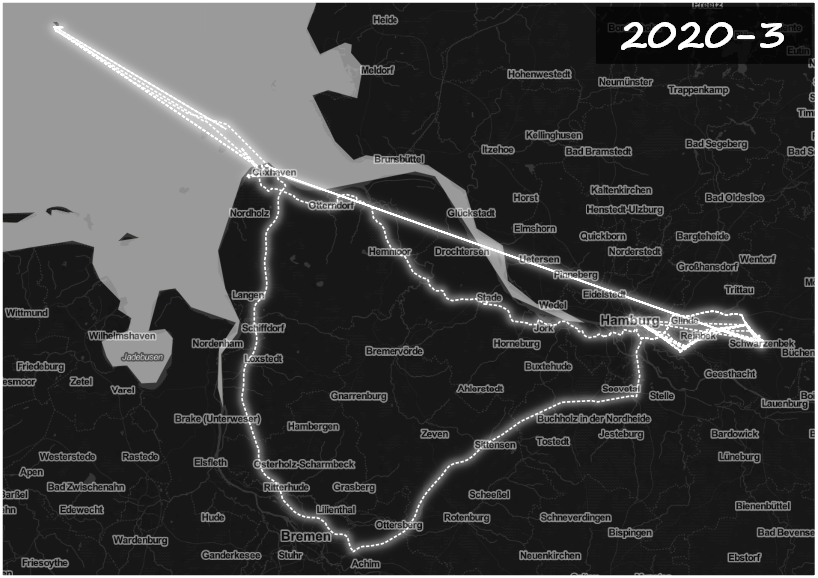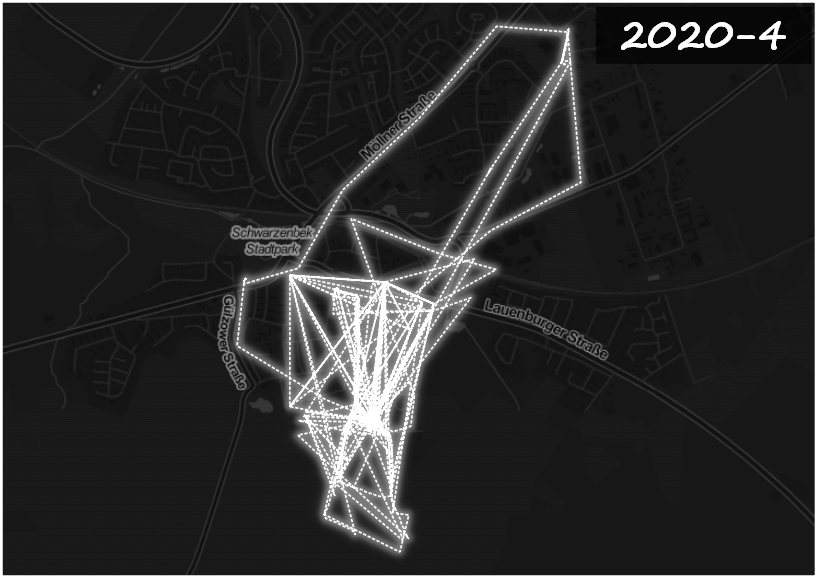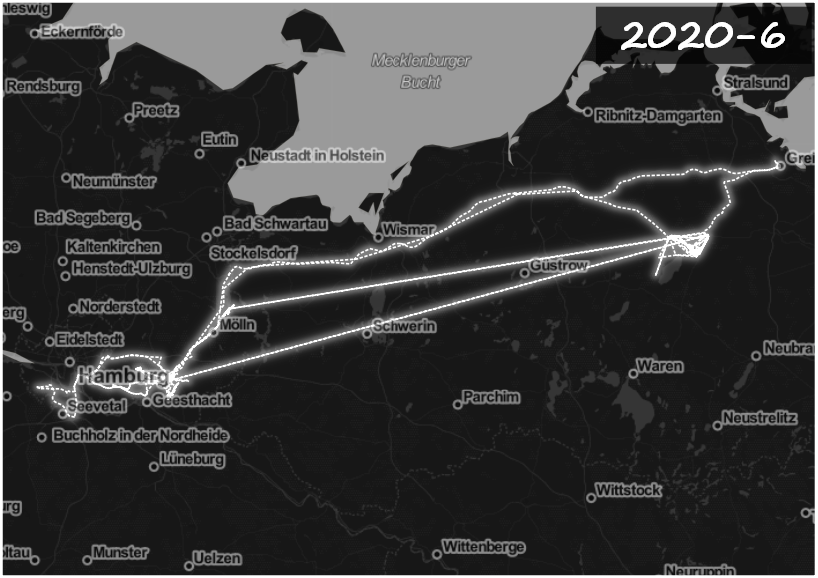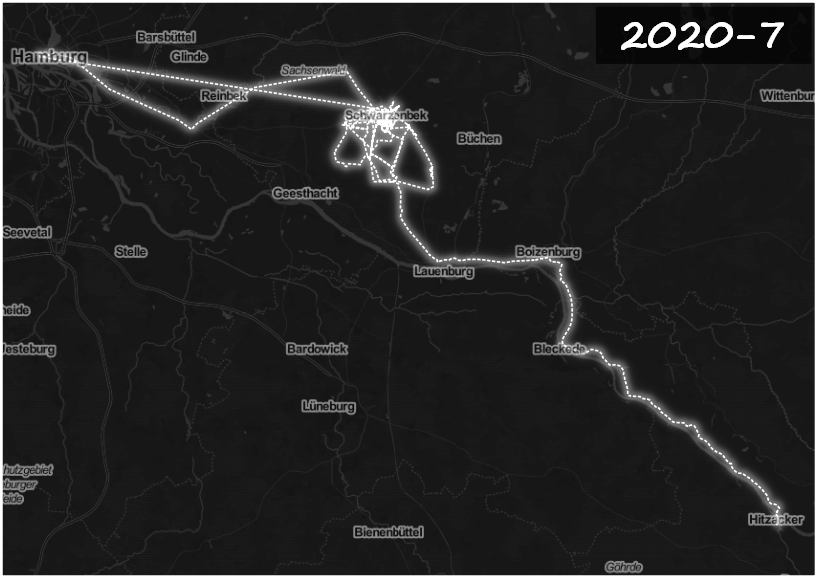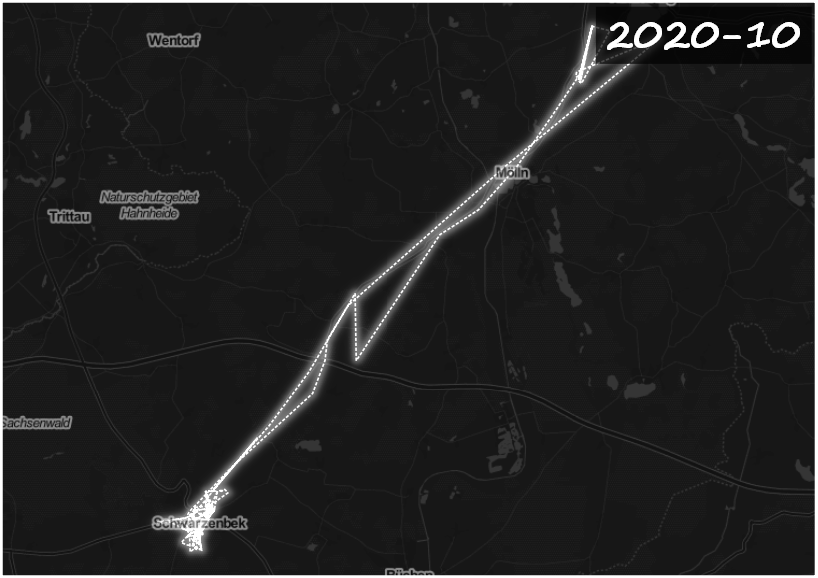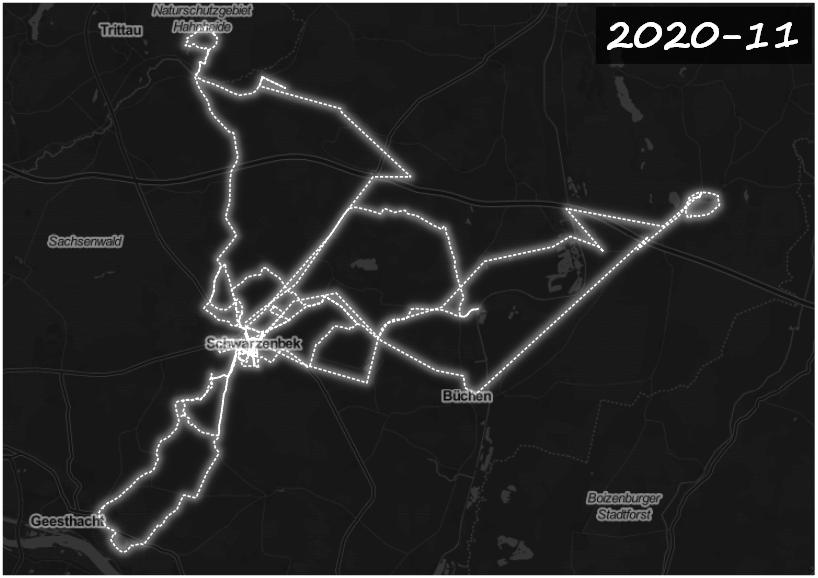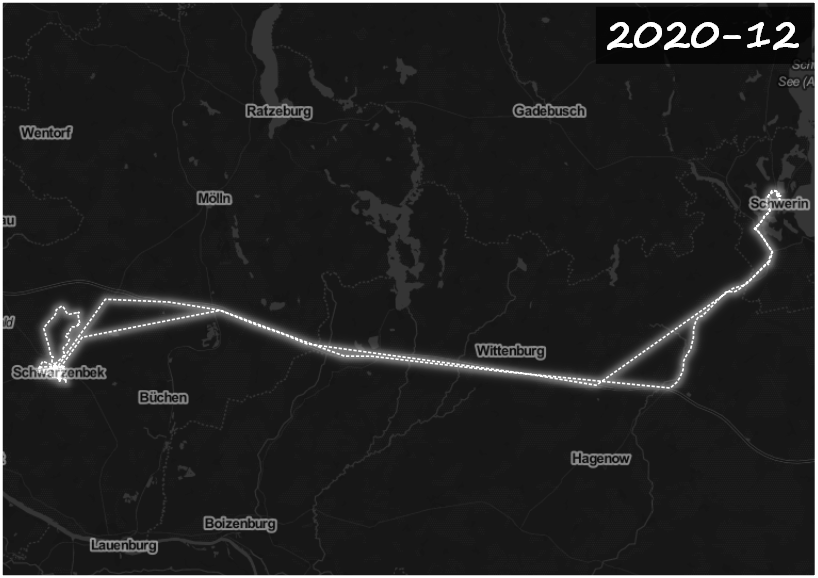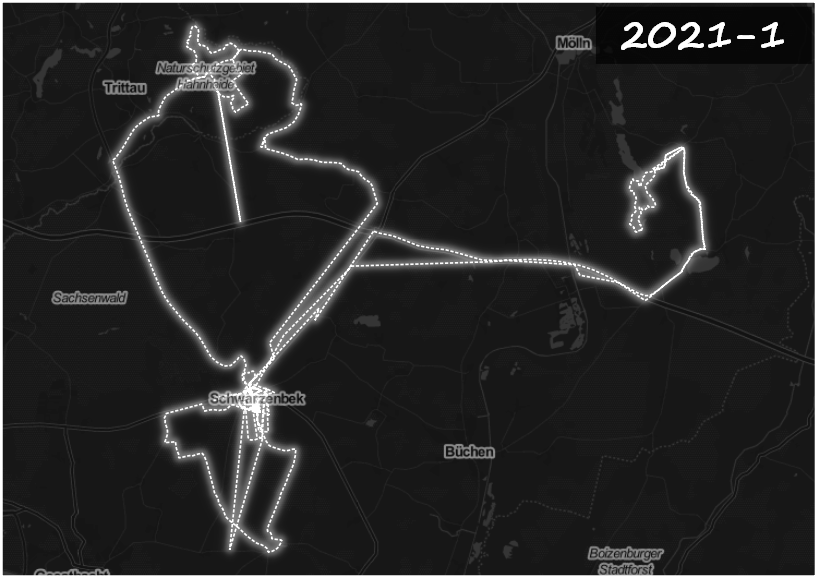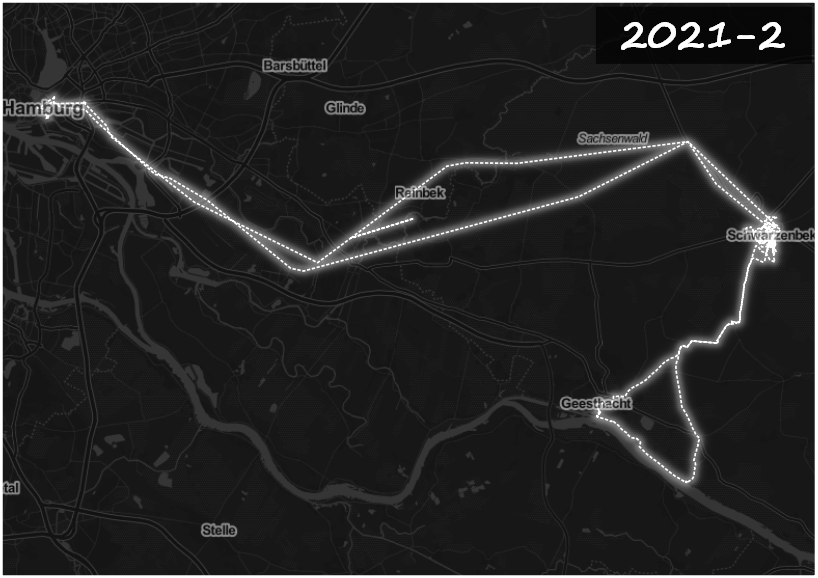my corona year
a data-driven review
of my first year working from home
"They're closing the schools!" - I can't remember exactly when I realized just how much our lives would change by the Covid19 pandemic, but this statement from my wife on 3/12/2020 is one of the moments I remember well. Yet we were far away from the pandemic, maybe even in one of the safest places in Germany at that time. Over our wedding anniversary we had gone to the high sea island of Helgoland and the ferry service had been suspended due to a storm right on the day of our arrival. Sitting in our hotel room, we were doomscrolling on our phones.
After coming back home I realized that the real storm was just beginning: Both of my employers did the right thing and put employee health first by closing the offices "until Easter". My first day of working from home in this new reality was 3/16/2020.
Now, one year later and still working from home, I'd like to look back on this crazy, distressing, and hopefully unique year and do so using various personal data sets on mobility, consumer behavior and leisure time. I want to explore how my life has changed because of the virus. In part out of an intrinsic motivation as a data analyst, but also to preserve the memory of this crazy time for myself.
1 - mobility
A few details about me: I work in a consulting company (ok, I was in 2019/20) and live just outside of Hamburg in a small town. Commuting to Hamburg and Berlin I spent quite some time on the train, knowing the schedules and quirks of each connection. To be on the move at least once a week was part of my identity, and also privately I traveled a lot in the past years. So to see how much my life changed in the lockdown, it only made sense to look at my mobility behavior first: I visualized data from my Google Location History for the years 2019 and 2020 on a map.
I travelled a lot less in 2020…
Suddenly, my range of movement was limited by the pandemic. Contact bans meant that working in an open-plan office, traveling to customers and, most unfortunately, visiting family and friends were impossible. Working from home was unusual, but not unpleasant. I was incredibly privileged to have enough space for my own study and a decent Internet connection.
How little I was on the road can not only be seen in the maps but also in the cumulative kilometers covered per week in the next chart. The kilometers traveled are added up week by week. Thus, the long-distance trips (business as well as private) in 2019 clearly stand out as vertical jumps in the graphs. I have also rendered the data as a Nightingale Rose for the header of this page. Fancier, but in my opinion less readable.
The change to 2020 is stark and obvious: After a slight ramp-up in the first weeks of the year, I practically never left the vicinity of my city and the curve remains consistently flat. The short summer vacation, a trip to the neighboring state of Mecklenburg-Vorpommern, is only recognizable by a tiny bump in the middle of the year. Even more impressive to me is the development in 2021: you have to look closely, so snugly does the line nestle on the horizontal axis.
Of course, it's mainly long-distance trips by plane that add thousands of km of movement to the charts. But the impact of the pandemic on everyday life is actually better illustrated by a different analysis. I logged into my Deutsche Bahn account, looked at the timestamps of the long-distance tickets and used them to build the next chart, which shows the period March 2019 to March 2021. For my job, I used to travel practically only by train, be it to customers or to our second office location in Berlin. Exactly in the middle of the chart, i.e. in March 2020, my time at home began. When the number of cases briefly dropped in the summer of 2020, I still had a few appointments in our Berlin office. After that? Unfortunately, no more trains...
2 - consumer behavior
Like most people in 2020, I did my fair share of bread baking, cycling and walking the neighbourhood. But what else changed? One obvious subject is my consumer behavior: No more downtown lunch purchases meant fewer cash payments. Another aspect not to be missed when considering consumption is online shopping. I was not an excessive online shopper in previous years and really liked buying goods in brick-and-mortar stores. Unfortunately, that has changed in 2020 as well.
These opposing developments can be easily identified in the next chart, which shows my increasingly infrequent trips to the ATM as black dots and my much more frequent Amazon orders as grey ones. I'm not really proud of this picture, but I guess it's part of the truth of this pandemic that retail has been hit hard and I am part of the problem.
Some of the stuff I ordered were components for small craft projects. An irrigation system for my raised planting bed, a new case for my Raspberry Pi and various cables and LEDs for the lighting of Lego models. Stuff that can be done alone at the kitchen table or at the workbench to pass the time.
I had the impression early on that such a pandemic would drag on a bit, so I decided to redesign my study: A new standing desk, laptop and monitor stands, and of course a better webcam for video meetings. The exploding demand and reduced supply due to the disruption of logistics chains led to soaring prices. The chart below shows prices for two higher-end webcams for 2019 and 2020, normalized to what the cams cost on Jan. 1, 2019. Usually electronics tend to get cheaper over time. Well, not in 2020…
Going from "only home to sleep" to " 24/7-at-home" led to other, measurable changes, of course. My work laptop, an external monitor, and the lights in my study were running at least 9 hours a day, and spare time became more digital as well. Even the sessions of a Lego youth group I coach are held remotely. This of course came with a price: I used 31% more electricity in 2020 than I did in 2019! I knew the difference would be substantial but the amount still surprised me...
As a final note in this chapter I would like to adress another topic. Fewer free soft drinks at the office and breakfast to go also meant fewer calories. I lost noticeable weight in 2020 but I do not want to post health data here...
3 - leisure time
Since my commute in 2020 consisted of a few meters from the kitchen to my study I wondered how much time I saved by not taking the train to Hamburg. I did some calculations and treated every work from home day in 2020 as if I had travelled to Hamburg and was surprised by the result of almost 300 hours, or about 12 days in the first year.
Before the lockdown I spent time on my way to work on conversations with fellow commuters and on podcasts. I used the time differently now but I wondered how exactly? I probably “donated” a lot of it to my employers, sitting down at my desk earlier and logging off later than before. What I noticed was that my media use changed enormously as a result of the commute: I was on Wi-Fi at home, so I consumed more YouTube videos and less podcasts than usual.
I took a look at my Youtube history to see how many more videos I watched, and I was a bit shocked: I watched around 6,000 videos in 2020, which is just over 1,500 more than in 2019. Let’s assume these videos are 5 minutes each, that's 128 hours. So I lost over 40% of my time saved by commuting back to YouTube. Time well spent? Probably not...
so what's next?
Today, one year after Helgoland, I am still working from home and it does not look like anything will change in the foreseeable future. There' s much to be depressed about now. New mutations, the number of cases rising again, a sluggishly rolled out vaccination campaign and the fact that I am slowly but surely losing track of some of my less close friends and acquaintances. I miss people. Not just the ones I already know and love but also the friends I haven't even made yet.
But looking back on this year, there is still much for which I am grateful: Colleagues and family members have been infected, but they have all since recovered from the virus. My wife, who works in healthcare, has already been vaccinated and with any luck, I will be this (late) summer as well.
I have a different, I might say more conscious, approach to distance, freedom of travel and my work-life balance. I’m blessed to have two exciting jobs, a roof over my head and I’ve just celebrated my wedding anniversary again. And on a final note: My cat probably had the time of her life in 2020, when I always stayed at home.
Stay safe - we’ll get over this together!

